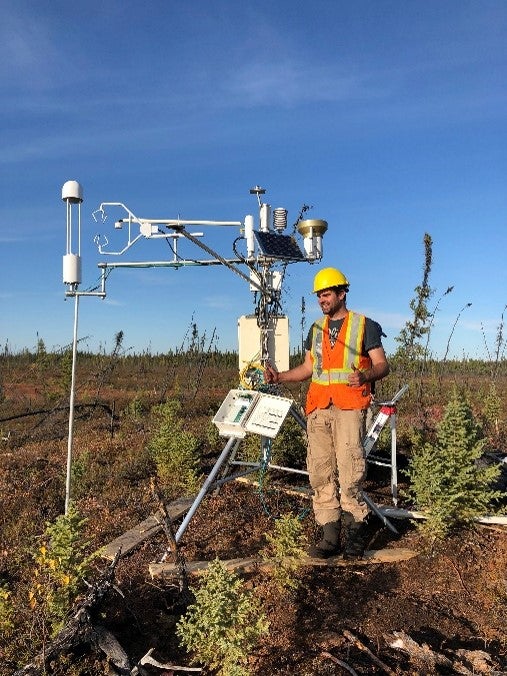By Christopher Schulze
In June 2019, a peatland burned near my long-term peatland research site in northernmost Alberta. This changed my PhD, as I and my supervisors David Olefeldt (University of Alberta) and Oliver Sonnentag (Université de Montréal) realized that this presented a rare opportunity. Two key uncertainties for understanding the current and future carbon balance of Canada's peatlands are related to permafrost conditions and wildfire. And given the accelerating fire regime in boreal western Canada, understanding how wildfire on permafrost peatlands affects the long-term carbon balance has been identified as a key knowledge gap. Thus, one of our research goals was to compare the net carbon balance in the years and decades after the fire with nearby unburned peatlands, but also to compare to the carbon lost through combustion during the fire. We hypothesized that the burned permafrost peatlands would have significant carbon losses for a long time after the wildfire, due to both the slow recovery of vegetation and the influence of the wildfire on the depth and temperature of the active layer, i.e., the seasonally thawed peat layer above the permafrost.

To measure greenhouse gas fluxes from these remote, pristine ecosystems right after a wildfire, we applied the eddy covariance technique which uses both wind velocities along with greenhouse gas concentrations at a high frequency. We set up two eddy covariance systems, the first one at the recently burned site and the second one at a nearby permafrost peatland which burned in 2007. The start of the pandemic in 2020 presented challenges to get the instrumentation installed and running, but with a lot of support of my colleagues, supervisors, contractors, and collaborators, things worked out eventually. Now we have three years of data, and the research has the last year been funded through the Can-Peat network. This year we are presenting preliminary data, and we are able to show that the burned permafrost peatlands act as substantial net carbon sources for at least 15 years after a fire. These carbon dioxide emissions have yet not been accounted for in any greenhouse gas emissions inventories and will be important for future modelling efforts. While I am about to complete my PhD this summer, new graduate students funded through the Can-Peat network will continue the work on the burned peatlands over the coming years and I am excited to the see the future results.